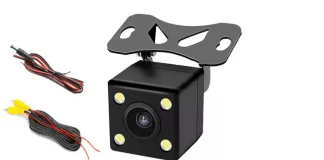In-depth technical dive into the MG1613S GPS Chip found in many Android Headunits
The MG1613S GPS chip is a highly regarded component found in many modern Android head units, known for its robust performance and precise location capabilities. In this article, we will explore the specifications, features, and integration of the MG1613S GPS chip, providing a comprehensive understanding of why it is a preferred choice for automotive applications.
Key Specifications of the MG1613S GPS Chip
GPS Performance:
- Positioning Accuracy: Typically within 2.5 meters CEP (Circular Error Probable) for standard positioning.
- Sensitivity: -165 dBm for tracking, -148 dBm for cold start, and -160 dBm for hot start, ensuring reliable performance even in challenging environments.
- Update Rate: Supports up to 10 Hz, making it suitable for high-speed applications.
- Hardware Features:
- Frequency: Operates on the L1 frequency (1575.42 MHz).
- Channels: 56 channels, providing ample capacity for signal acquisition and tracking.
- Power Consumption: Low power design, typically consuming around 30 mA in continuous mode, which is critical for minimizing power drain in automotive applications.
- Operating Voltage: 3.0V to 3.6V, compatible with an Android Headunit mainboard logic power supply.
- Dimensions: Compact form factor with dimensions of 10mm x 9mm x 2mm, allowing for flexible integration into various head unit designs.
Antenna Support:
- Active Antenna: Can interface with an active antenna for improved signal reception, often necessary in urban or densely wooded environments.
- Passive Antenna: Supports passive antennas as well, providing versatility in design choices.
Features of the MG1613S GPS Chip
Fast Time to First Fix (TTFF):
- Cold Start: Less than 35 seconds.
- Warm Start: Less than 30 seconds.
- Hot Start: Less than 1 second.
These quick TTFF times ensure that the GPS can rapidly acquire signals and provide location data shortly after the head unit is powered on.
Assisted GPS (A-GPS):
- Support: Capable of utilizing A-GPS data to improve startup performance and accuracy, particularly in areas with poor satellite visibility.
Multipath Mitigation:
- Technology: Equipped with advanced algorithms to reduce errors caused by reflected signals, enhancing accuracy in urban environments.
Dynamic Range:
- High Dynamic Range: Capable of tracking signals in both high-speed scenarios (up to 515 m/s) and high-altitude conditions (up to 18,000 meters).
Satellite System Compatibility
The MG1613S GPS chip is not limited to decoding signals from the GPS alone. It is a multi-GNSS (Global Navigation Satellite System) receiver, meaning it can decode signals from multiple satellite systems. This enhances its reliability and accuracy, especially in areas with limited visibility to the sky.
GPS (Global Positioning System):
- Description: The U.S.-based satellite navigation system.
- Frequency: L1 (1575.42 MHz).
GLONASS (Globalnaya Navigatsionnaya Sputnikovaya Sistema):
- Description: The Russian satellite navigation system.
- Frequency: L1 (1602 MHz + k*562.5 kHz, k = -7, -6, …, 5, 6).
Galileo:
- Description: The European Union’s satellite navigation system.
- Frequency: E1 (1575.42 MHz, same as GPS L1).
BeiDou:
- Description: The Chinese satellite navigation system.
- Frequency: B1 (1561.098 MHz).
QZSS (Quasi-Zenith Satellite System):
- Description: A regional satellite system operated by Japan, enhancing GPS in the Asia-Oceania region.
- Frequency: L1 (1575.42 MHz, same as GPS).
Benefits of multi-GNSS receivers
The ability to receive signals from multiple satellite systems significantly improves positioning accuracy and reliability. This is especially useful in urban environments with tall buildings or in remote areas where signals from some systems may be obstructed.
Integration with Android Head Units
Integrating the MG1613S GPS chip into an Android head unit provides several benefits, making it a popular choice for automotive applications:
- Enhanced Navigation Accuracy: The high sensitivity and accurate positioning capabilities ensure reliable navigation, crucial for in-car navigation systems.
- Seamless Connectivity: The ability to interface with both active and passive antennas allows for flexible installation options, ensuring optimal signal reception regardless of vehicle design.
- Low Power Consumption: The efficient power usage of the MG1613S helps maintain the overall energy efficiency of the head unit, crucial for automotive systems that need to minimize heat generation through high power usage.
- Quick Position Fixing: The fast TTFF ensures that the navigation system is ready to use almost immediately after the head unit is turned on, enhancing user experience.
- Reliable Performance in Challenging Environments: The robust multipath mitigation and high dynamic range ensure consistent performance in urban canyons, dense forests, or other environments with potential signal disruptions.
- Multi-GNSS Support: The ability to decode signals from multiple satellite systems (GPS, GLONASS, Galileo, BeiDou, and QZSS) ensures a higher availability of satellite signals, providing more accurate and reliable positioning data.
Conclusion
The MG1613S GPS chip stands out as a high-performance, reliable choice for Android head units, offering precise positioning, efficient power consumption, flexible integration options, and robust multi-GNSS support. Its advanced features and specifications make it an integral component in delivering superior navigation experiences in automotive applications.








